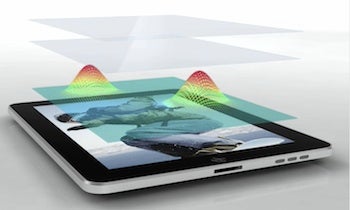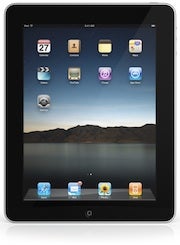During Wednesday's unveiling of the long-awaited iPad, Apple CEO Steve Jobs detailed that the new 9.7-inch tablet will make use of In-Plane Switching display technology. So, what excatly is In-Plane Swicthing, what does it do and why is Apple choosing to make use of this display technology for their new device?
In-Plane Switching (IPS) is an LCD technology first introduced in 1996 by Hitachi. It was initially developed to correct the poor viewing angles and color problems that LCDs had at the time.
Due to initial high-costs, IPS adoption was low at first, and mainly found only in high-end monitors, aimed primiarliy at the professional sector. Of course, over time, IPS was improved and refined, and as is the case with most new technologies, costs eventually came down to an acceptable level for mass-production. For example, Apple's newest iMacs use IPS displays..
The IPS display used int he iPad is a 9.7-inch 1024-by-768 resolution LED-backlit LCD screen. IPS gives the iPad an impressive wide viewing-angle of up to 178 degrees. Other LCD technologies tend to have narrower viewing angles, especially in the vertical direction.
Ensuring that the device can be held in a variety of ways without major viewing angle issues was clearly of great importance to Apple, especially considering that you'll rotate the iPad depending on what you're viewing, and Apple positions the iPad as a casual use 'living-room' device, perfect for consuming an assortment of multimedia.
Typical casual-use devices, namely netbooks, use a twisted nematic (TN) display technology. TN although cheaper, offers inferior color reproduction (only 6-bit color, while IPS supports richer 8-bit color), and lower viewing angles, so Apple's use of a higher quality display techology (IPS) for such a casual device is welcomed.
You can find out more about how IPS technology works at PCTechGuide, and for a full run-down of iPad specs, see Jason Cross' story on the topic.
Follow Nitin kumar on Facebook.


0 comments:
Post a Comment